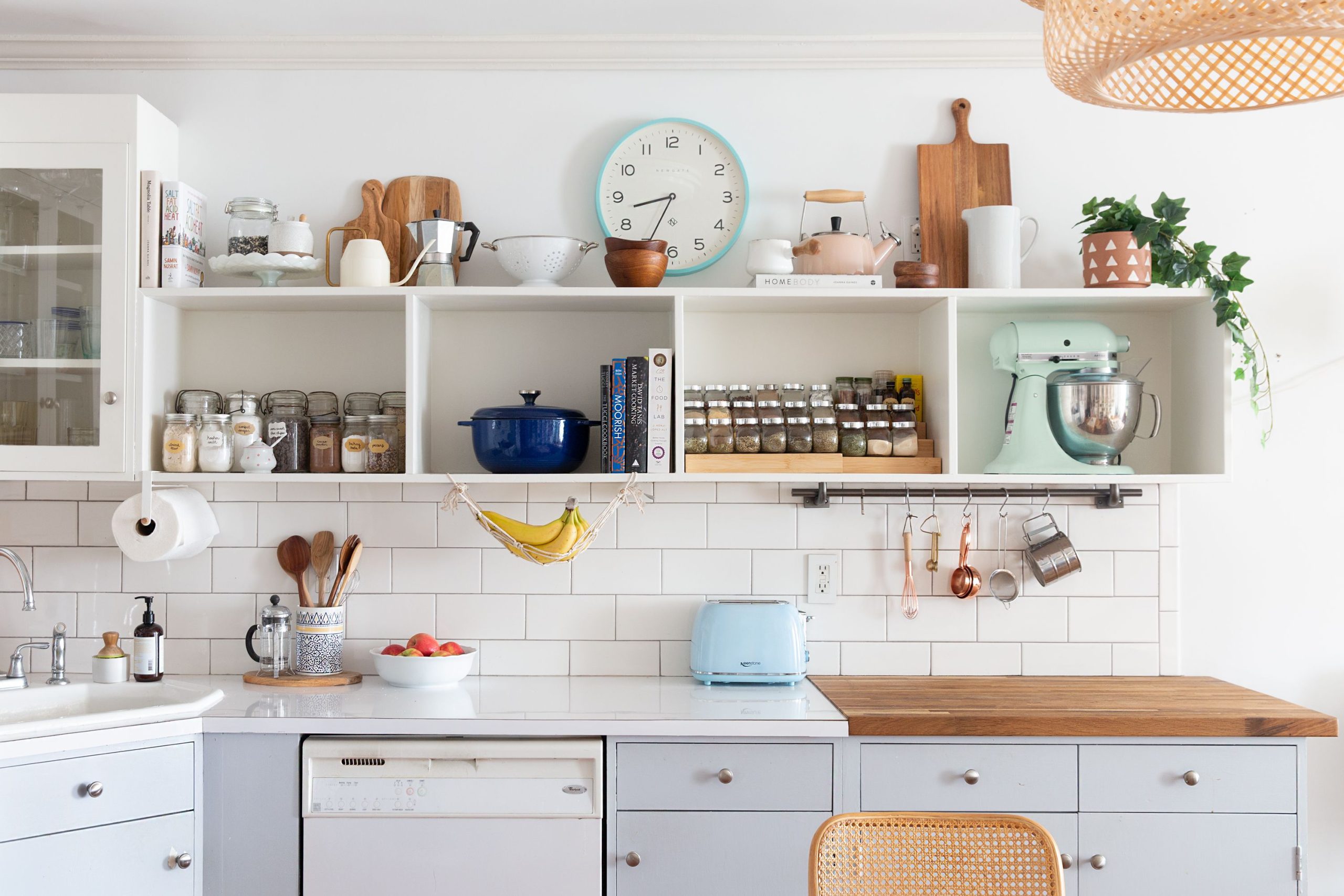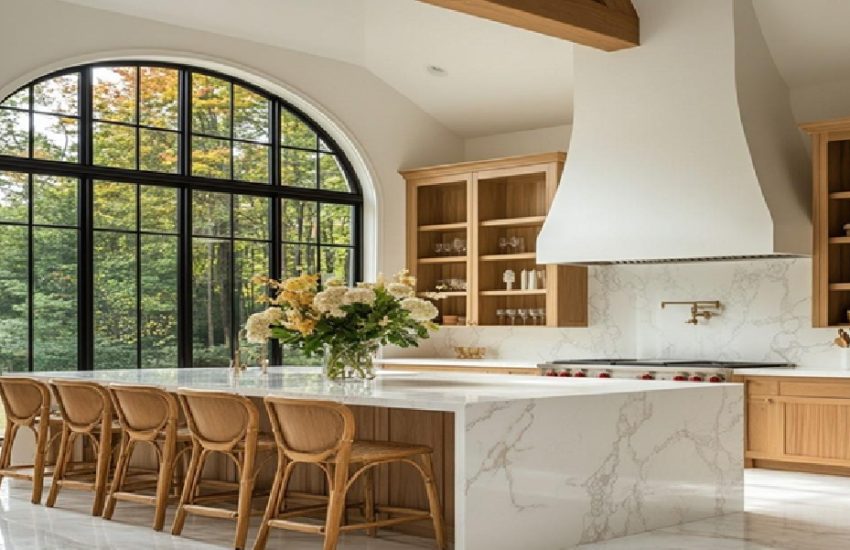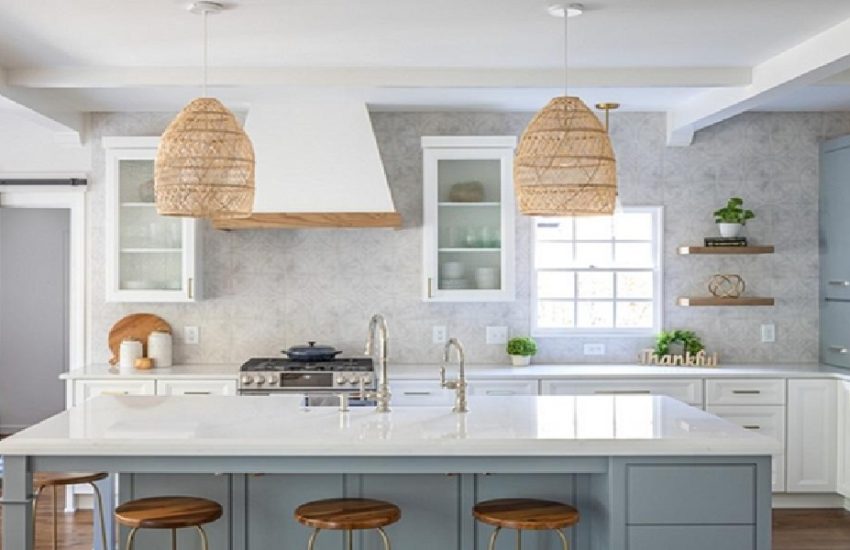Spruce Up Your Kitchen With These Decorating Tips
Your kitchen may be where most of your meals take place every day, but that doesn’t mean its decor should look drab. From color schemes to storage solutions, there’s plenty you can do to give your space new life — even if you’re working on a limited budget. Here are some simple ways to makeover your kitchen without breaking the bank or sacrificing style.
Choose A Theme
When thinking about a new theme for your kitchen, first decide what you want to accomplish. Are you craving a more modern aesthetic? Or do you want to take some inspiration from coastal French kitchens? Whatever the style, it’s usually good to start with a few key elements. For example, several knobs handle, and hardware might help make your space seem more spacious. Add shelves and pantry space to give it that homey feel. And anything you can do to brighten your space will help it feel more welcoming.
You can choose a single theme or mix and match themes depending on your personal tastes. This site has a great example of mixing a farmhouse kitchen with touches of country chic to give a touch of modern flair.
Make Your Kitchen Pretty
“Kitchen pretty” doesn’t have to mean a lack of function. Start by softening the corners of your space with floral arrangements, nice tablecloths, candles, and other decorative touches. A beautifully set table can instantly create a more elegant atmosphere in your kitchen. Giving your cabinets a fresh coat of paint can help as well. If you don’t have the budget to replace them, consider painting just the fronts to give them new life.
Add Color
You don’t have to spend money painting walls or buying expensive artwork to liven things up in your kitchen. A splash of vibrant paint here and there will go far toward making your cooking area feel fresh and alive. Start by adding pops of red, orange, yellow, and green (the colors associated with happiness) into your cabinets, drawers, and fridge. Try using warm neutrals like taupe, cream, and chocolate browns to add depth to your interior spaces.
You’ll also want to bring more colorful items into view such as vases, plates, towels, and dishware. Brightly colored flowers add an extra dash of vibrancy when placed strategically around the room while candles emit soft light that makes everything seem brighter and warmer. And what would fall under the category of “happy” décor? Plants, of course! They not only beautify your surroundings, but they also help cleanse indoor air through the release of oxygenated water vapor.
If you’d rather keep your walls bare, consider giving them a subtle coat of texture instead. Paint one wall in each main color — including white — and use stenciling to mimic wallpaper patterns on other areas.
Stenciled walls tend to appear less busy than painted ones because they offer focal points between which people can move freely. For added interest, try cutting out different shapes from scrap fabric and sewing them onto plain cotton fabrics. Then attach those materials directly to your walls with spray starch and iron-on adhesive. If you prefer something even simpler, try picking up inexpensive frames filled with scraps of paper and glue then hanging them above your countertops.
A little bit of effort goes a long way toward creating beautiful kitchens. Check out these next pages for ideas on how to brighten up your culinary domain.
Organize Storage Space for Easy Access
One of the biggest complaints among cooks is a clutter caused by loose utensils, spices, and other foodstuffs lying around. To avoid having to rummage through mountains of junk looking for what you need, set aside a designated spot for storing pots, pans, knives, and other cookware. Keep pots and pans on hooks near the stovetop and store nonstick cookware in open bins nearby.
Assemble spice racks along kitchen cabinet doors to hold small bottles of herbs, seasonings, and oils. Use clear glass jars to display special ingredients used occasionally like sugar, salt, coffee beans, and tea bags.
Place frequently consumed foods like bread, milk, and cereal in easy reach on lower shelves. This allows guests to grab essentials without being tempted to snack.
Include baskets, boxes, and plastic containers in your collection of organizational tools. Store supplies that aren’t regularly accessed on high shelves. One idea is to put cookie sheets, cake pans, and muffin trays on top-shelf units above the oven. Put away smaller appliances, such as graters, blenders, and waffle irons, in convenient locations near where they get regular use.
Lighting is Important Too
The lighting in your kitchen has probably been neglected until now. But this important part of the overall environment deserves just as much attention as the rest of the layout does. Make sure that your ceiling fixtures provide good illumination so that everyone in the family can see clearly during meal preparation and cleaning chores. When shopping for lights, choose bulbs that match the wattage requirements for your fixture types, according to the U.S. Department of Energy website.
And don’t forget about task lighting — especially overhead track lighting — since it provides ample illumination for workstations and counters.
Another great option is to install skylights. Skylights let natural sunlight stream right down into the kitchen, eliminating the need for artificial sources of heat and providing valuable warmth during cold months. In addition to reducing energy costs, skylights allow homeowners to enjoy outdoor views and sunshine inside.
Look for gadgets that serve multiple purposes.
For example, a colander can double as a vegetable holder and a wire rack conveniently stores cut vegetables after washing. Plus, many Amazon kitchen gadgets come with removable parts that can be stored easily when they’re not needed.
For maximum efficiency, organize your pantry and refrigerator with shelving systems made specifically for keeping canned goods upright. Canned foods lose flavor faster than boxed products due to exposure to oxygen and moisture, so store them correctly to prevent spoilage. After opening cans, transfer contents to sealable plastic baggies and refrigerate.
Next, sort products based on age and remove damaged or spoiled items before labeling the remaining food items with permanent markers. Store leftovers properly to preserve quality and extend product life.
Cleanliness is essential to maintaining healthy eating habits. In the following section, we show you practical ways to maintain sanitation standards in your kitchen.
Make It Personal with Accessories
As previously mentioned, a kitchen is not complete without accessories. Choose ones that are practical and match your décor. For example, clear glass jars look good on open shelves and can hold spices or even home-baked goods like cookies and brownies.
For added character, substitute plastic lids for the screw-on metal versions. Small accessories also add flair to your spaces by giving them a personal touch.
Keep it Clean
Although the average American household spends five hours per week preparing meals, few of us dedicate enough time to actually eat them. Most of us either rush our dishes immediately after dinner or leave dirty bowls on the table overnight.
By taking proper care of your kitchen surfaces, you’ll save yourself lots of time spent scrubbing and sanitizing. Invest in a sink strainer basket with drain holes large enough to accommodate thick spaghetti noodles. Set it underneath the faucet where it won’t clog pipes or waste hot water. Also, purchase a sponge dispenser and separate scouring pads for rough jobs like scraping off pots and rinses.
To ward off bacteria growth, wipe down kitchen tables and countertops with disinfectant wipes. Wash wooden chopping blocks, platters, and serving pieces thoroughly with soap and warm water. Rinse again and dry completely. Dust tops of range hood fans with baking soda to reduce grease buildup. Cover handles of heavy pots and pans with aluminum foil to prevent accidental openings. Wipe down pot bottoms with a wet cloth or detergent solution to discourage germs. Avoid leaving soup stock simmering unattended, and always wash hands whenever possible.
It’s recommended that adults and children wash up together in order to establish hygiene practices early on. Children learn about personal responsibility by helping prepare food and doing routine tasks like clearing the table after meals. Encourage kids to practice good handwashing etiquette by showing them how to rinse hands thoroughly beneath running tap water. Teach older siblings how to load the dishwasher and unload the washer safely by practicing on empty cardboard boxes first.
Conclusion
These are just a few ideas that may help save some time, aggravation, and money. Cooking is a highly rewarding hobby and one that can be very affordable to pursue.
While many homeowners spend too much time building elaborate kitchen layouts and spending too much money on appliances, it’s all right there in the budget for you to do as you please.




